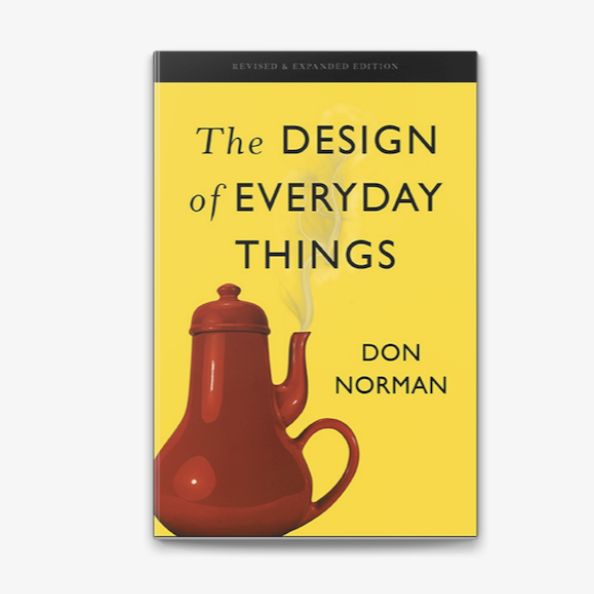My notes on The Design of Everyday Things (DOET) by Don Norman
“The Design of Everyday Things” (DOET) is a well-written book that provides a comprehensive look into the world of product design. The author argues that poor design is prevalent in our world and leads to frustration. He provides key principles of design, such as visibility and mapping, which are essential for creating products that are user-friendly and intuitive.
1. The Psychopathology of Everyday Things

Poor design predominates – the world is filled with frustration.
- An important principle of design is visibility.
- Other problems concern the mapping between what you want to do and what appears to be possible.
- It’s a poor design to allow a kind of false causality to occur.
- Conceptual model.
- Affordances, constraints, and mappings.
- Holes – affordances.
- Size of holes – constraints.
- Two principles of designing for people:
- Good conceptual model.
- Make things visible.
- Anecdote: University telephone system → 🔥 due to 1) lack of visibility 2) poor conceptual model.
- Mapping is a technical term meaning the relationship between two things like controls and their movements, and the results in the world.
- Added functionality → added complexity.
- The problem is that if the product is revolutionary, it’s unlikely that anybody knows how to design it; it will take several tries.
2. The Psychology of Everyday Actions
- People have a tendency to blame themselves for difficulties with technology.
- Taught helplessness.
- Four graphs: action cycle, stages of execution, stages of evaluation, seven stages of action.
- Difficulties lie in finding the relationship between intentions and physical actions/states.
- Gulf of execution – difference between what you want to do and allowable actions.
- Gulf of evaluation – how easy it is to understand the mappings between a system’s physical states and expectations/intentions.
- The Seven Stages of Action as Design Aids:
- Determine the function of the device.
- Tell what actions are possible.
- Determine mapping from intention to physical movement.
- Perform the action.
- Tell if the system is in the desired state.
- Determine mapping from system state to interpretation.
- Tell what state the system is in.
- Four principles of good design include:
- Visibility.
- Good conceptual model.
- Good mappings.
- Feedback.
3. Knowledge in the Head and in the World
- Short-term memory (STM) and long-term memory (LTM).
- Reminding.
- If a design depends on lanes, it might be faulty.
- Labels are important and often necessary, but the appropriate use of natural mappings can minimize the need for them.
- Trade-off between knowledge in the world and in the head.
4. Knowing What to Do
- Sound can be used to improve the visibility of a product.
5. To Err Is Human
- Errors come in several forms. Two fundamental categories are slips and mistakes.
- Slips result from a lack of attention.
- Six categories of slips: capture errors, description errors, data-driven errors, associative activation errors, loss-of-activation errors, and mode errors.
- Connectionism.
- Forcing function is a form of physical constraints, e.g., pin in a grenade.
- Think of the user’s point of view. Assume that every possible mishap will happen, so protect against it. Make actions reversible. Try to make them less costly.
6. The Design Challenge
- Much good design evolves – hill climbing.
- Designers are not typical users.
- Aesthetics (design) vs. functionality (use).
- 🚰 design.
- Two paths to manage creeping featurism:
- Avoidance/restraint.
- Organization/modularization.
- Worshipping of false images (complexity).
User-Centered Design
- The design model, the user’s model, and the system image.
- Simplify the structure of tasks.
- Limitations of STM (short-term memory) should guide designers to limit tasks to no more than five.
- Exploit natural mappings.
- Use constraints so that the user feels there is only one thing to do.
- Standardize and you simplify lives, e.g., cars and clocks.
Conclusion
Overall, “The Design of Everyday Things” provides valuable insights for anyone involved in the design of products or systems, as well as for anyone who wants to better understand the impact of design on their daily lives. I recommend it to anyone interested in the intersection of design, psychology, and technology.


Leave a Reply